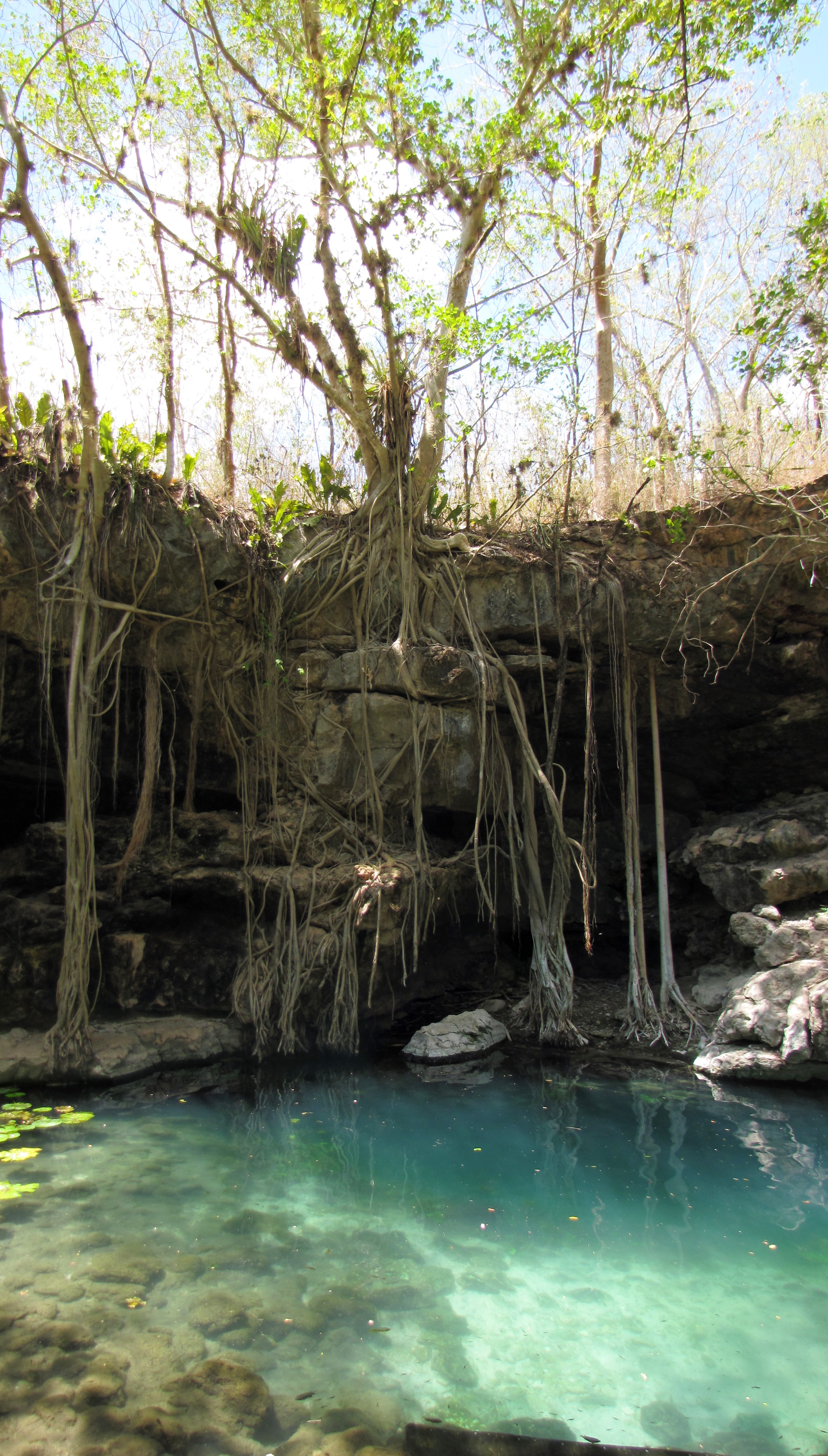
We said goodbye to Mérida on the morning of our fourth day and headed towards the heart of the ancient Puuc region, where we would spend the next two nights. Before diving into our next archaeological adventure, however, we took a slight detour to the X’batún and Dzom-Bacal cenotes. These swimming holes, located about halfway between Mérida and Uxmal off Highway 261, are popular spots for locals, and we shared our time there with families and elderly couples alike.
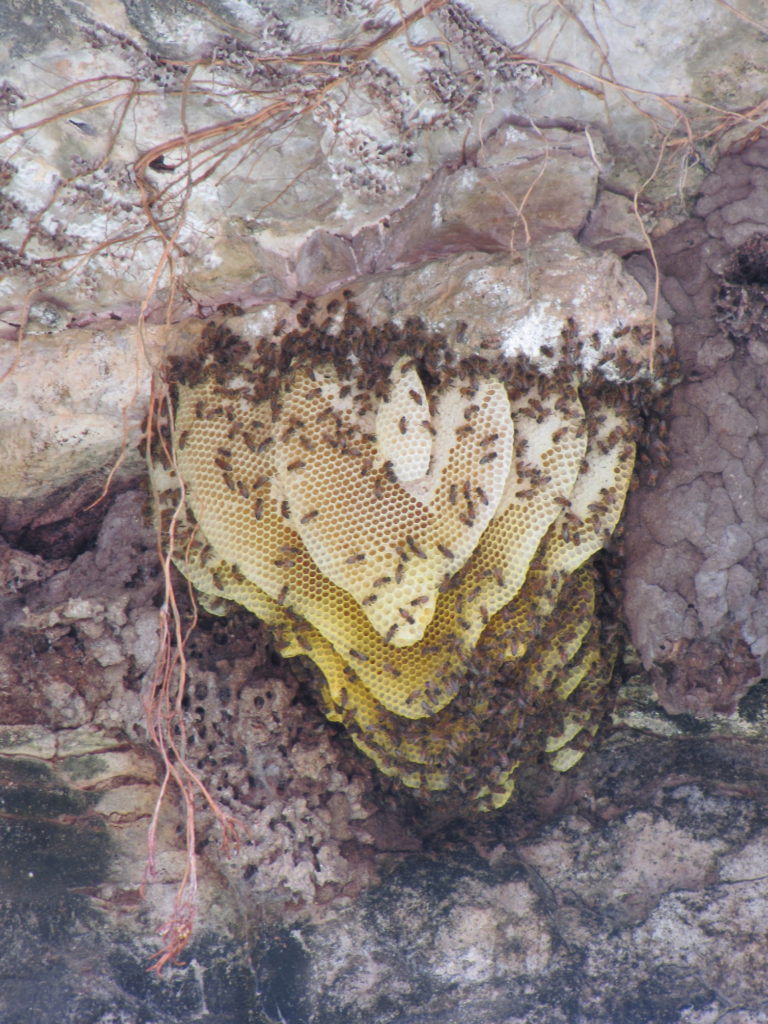
Despite a general lack of signage, we eventually found our way to the check-in point in San Antonio Mulix, where we paid and used the small bathrooms to change. Unfortunately, it was also here that our poor knowledge of Spanish finally bit us in the bum. I had read in another traveler’s blog that we would have the option of leaving our car there and renting a bike to take the rest of the way. We thought this meant cars weren’t permitted past the check-in point, making walking or biking our only options. Since I don’t ride, we chose to walk, despite the fact that it was dangerously hot and the cenotes were well over a mile away. [Note: Google Maps claims it is only a 0.1 mile, two minute walk to X’batún; that is WRONG.] As we started out, every person we passed looked at us like we were crazy—which we probably were—but we just smiled in return and kept plodding towards our destinations. Eventually, a concerned man came down from one of the few structures along the way to ask why we were going by foot. After a little back and forth, we finally understood that cars are permitted by the cenotes, leading us to very gratefully turn around and get ours.
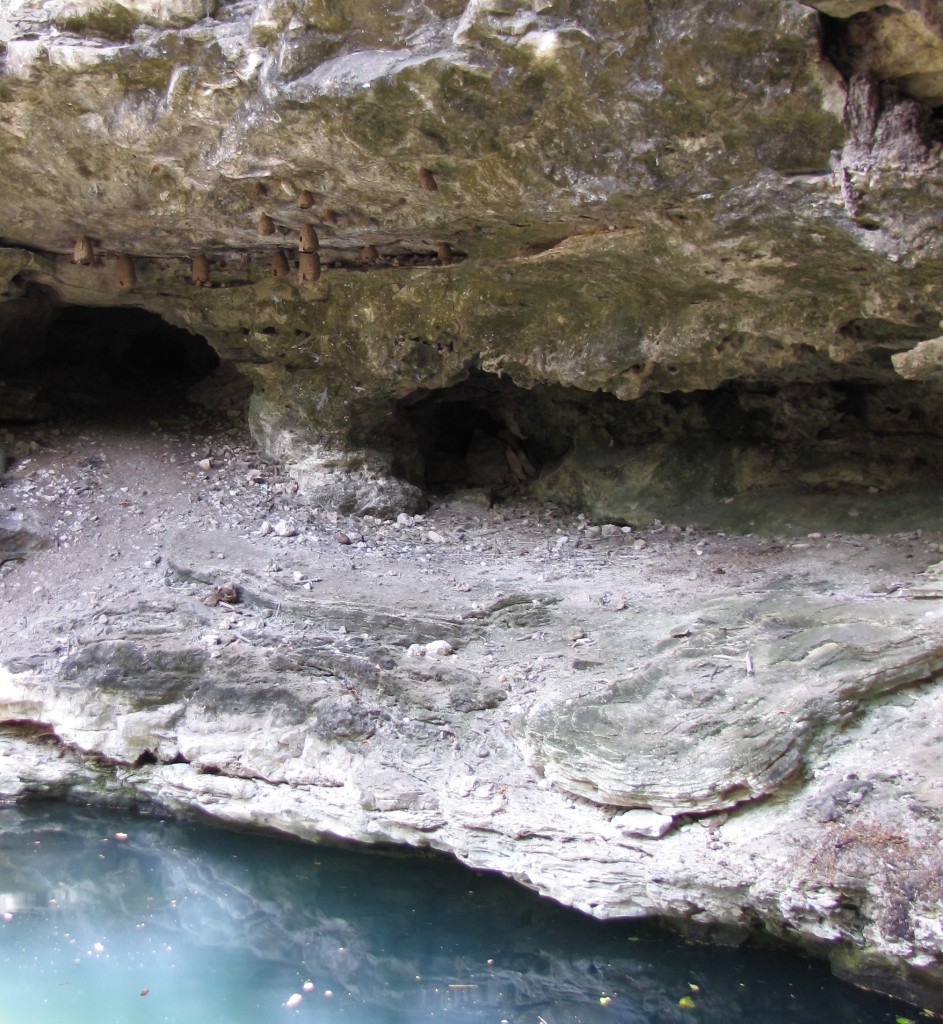
X’batún is the better known of the two cenotes, perhaps because it is the easier one to photograph, with bright, blue-green water dotted with lily pads and filled with colorful fish. The swimming area is partially surrounded by cliffs—from which long tree roots and wasp nests picturesquely hang—and partially by an open, limestone landing where visitors can enter the water. This short descent is still a little treacherous, however, due to the slippery vegetation that covers the submerged steps and rocks closest to shore. During our visit, one of the older visitors took what looked and sounded like a nasty fall on these stones (although that did not deter him, after a dazed moment, from staying and playing with his friends).
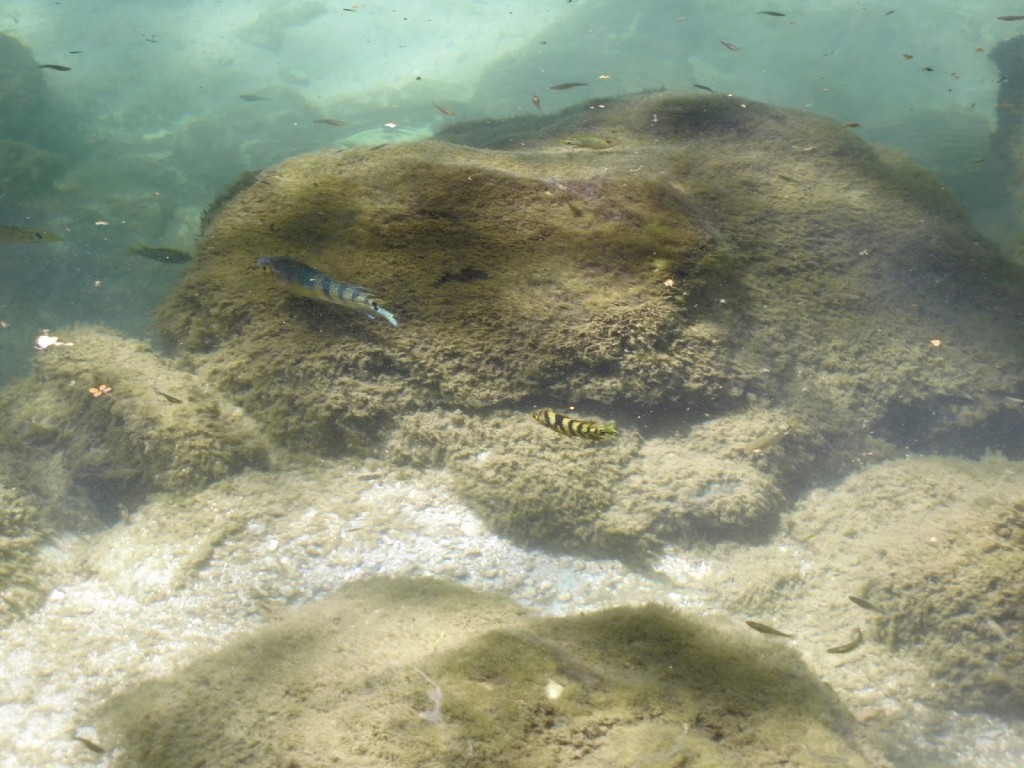
In contrast, the swimming area in Dzom-Bacal is located almost entirely beneath a limestone outcropping and is barely visible to visitors as they walk down the long staircase into the cenote. The cave-like surroundings keep the water particularly cool and blue, with very little flora growing on or between the rocks. Floating in the giant, liquid sapphire, we watched the few tiny fish swim around us while swallows darted back and forth in the low space above our heads. It was an incredibly beautiful experience, and one of the most serene moments of our trip.
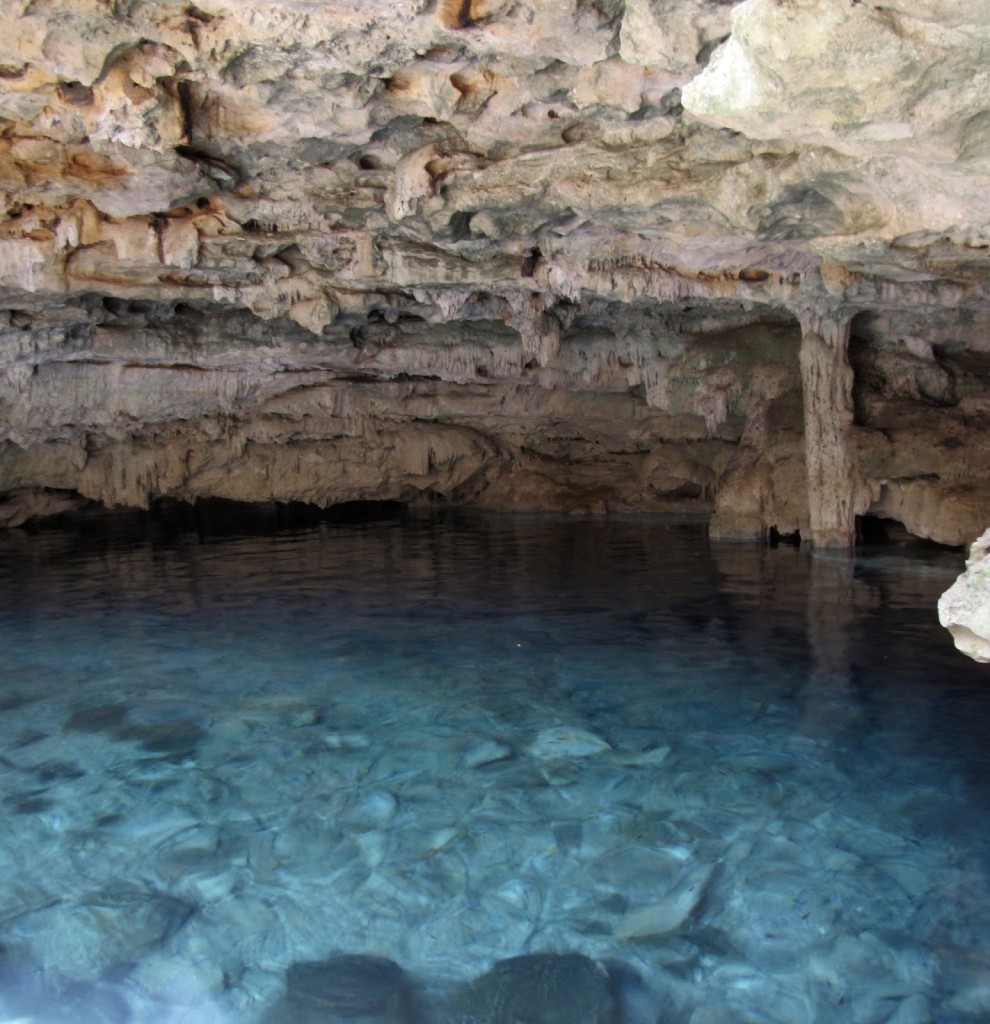
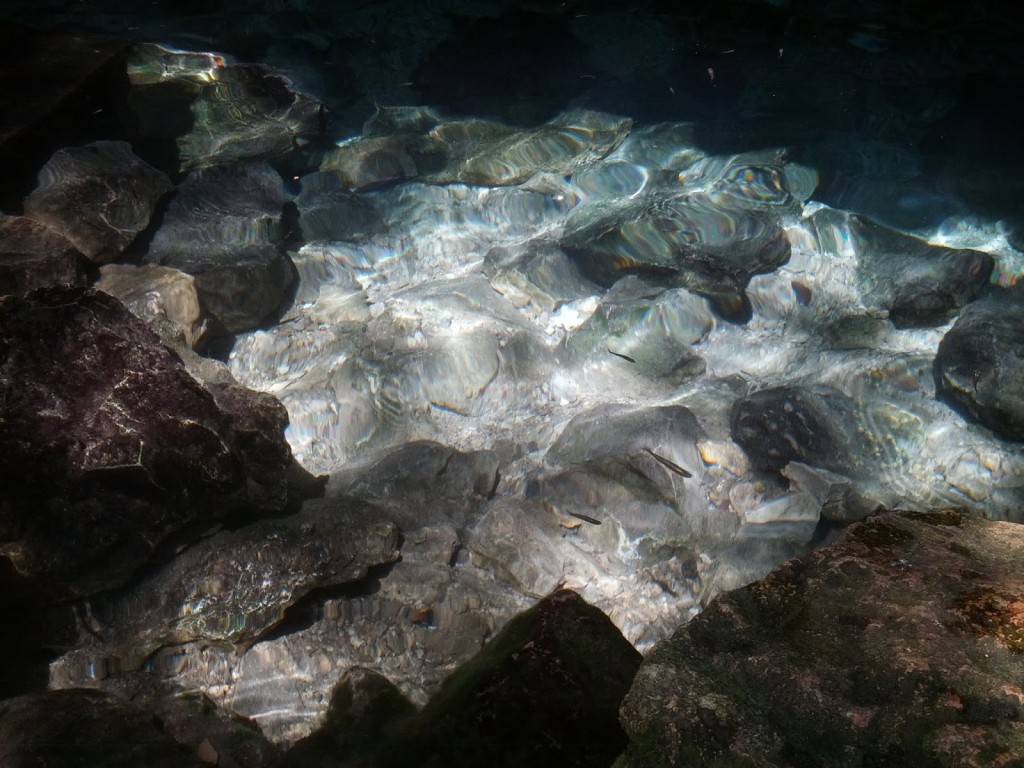
If you go—to these or any other cenotes—remember to not wear sunblock or other lotions, as these will wash off and harm the natural flora and fauna. Large hats and long sleeves are therefore imperative for protecting yourself when out of the water, and the time spent in well-lit swimming holes, like X’batún, should be limited.
Highly subjective personal rating: 9/10
I love these pictures. So cool!